Once winter comes, it may seem like your opportunities to go birding will have slimmed significantly. However, while the weather may be cooler, many locations are still hot spots for seeing unique birds. Continue reading below to learn about the 6 most common types of birds that spend their winters in Maine, plus what they look like!
Before getting started, it’s important to note that this list focuses on common species that are year-round residents that you can see in Maine during the winter, not migratory species that winter in Maine. Ready to learn more? Let’s dive in!
1. Ruffed Grouse
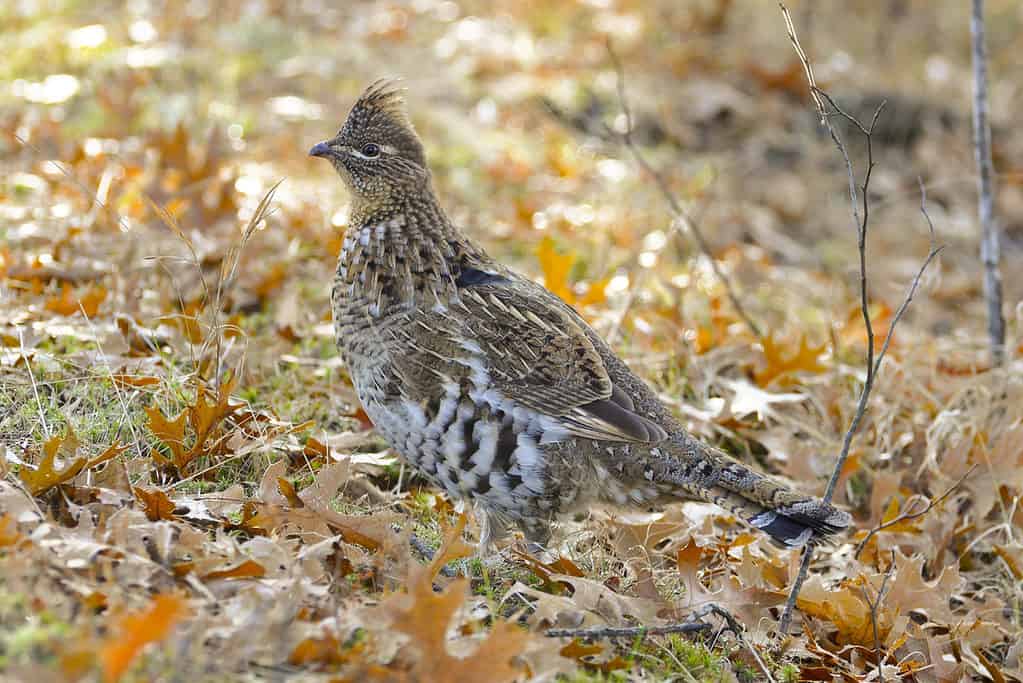
Ruffered grouses are named for their hidden black collars that may be exposed by males.
©iStock.com/SteveOehlenschlager
The ruffed grouse (Bonasa umbellus) can be found throughout the entirety of the state of Maine. They are named for the male’s behavior, which involves exposing black feathers on the neck, which look much like a neck ruffle. This extravagant display can be quite shocking, considering how well these feathers are disguised during the grouse’s day-to-day life. It can also be difficult to tell a male ruffed grouse from a female outside of this display, as the species has little sexual dimorphism aside from the black ruff.
Ruffed grouses prefer areas with aspen, spruce, and birch trees. They can be seen cleaning their feathers in the dust, sometimes even using the dirt of anthills. This behavior is known as anting.
2. Wild Turkey
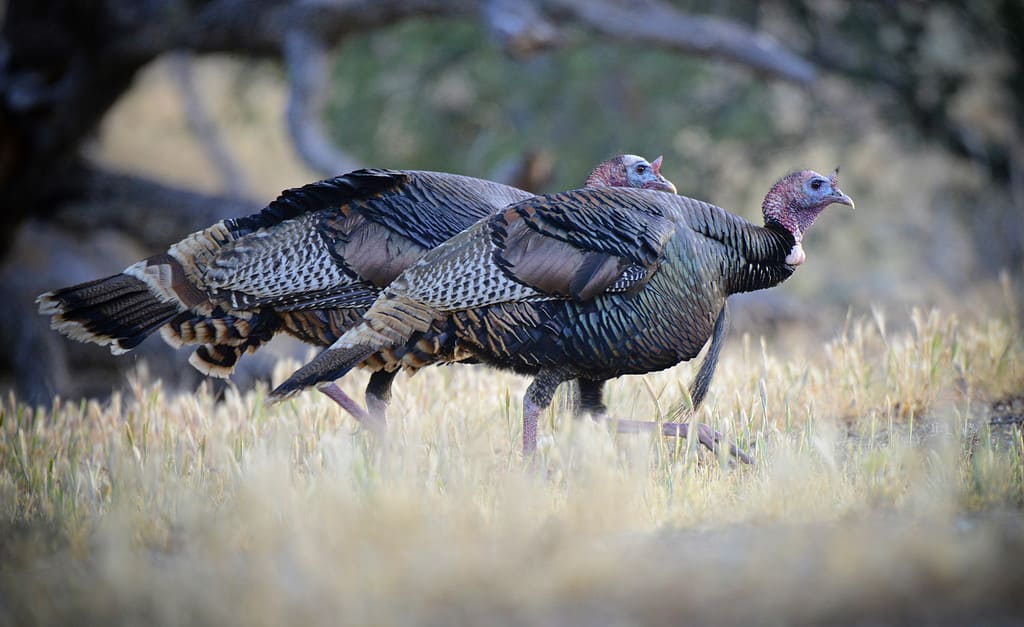
Turkeys are common throughout the United States, including Maine.
©Lois_McCleary/ via Getty Images
Wild turkeys (Meleagris gallopavo) are a staple species throughout much of the United States. A popular game bird, male turkeys can be best identified by their fanned tail and featherless, colorful heads. Females are leaner, lacking the colorful wattles and large tails of their male counterparts.
This species is a year-round resident in Maine, but it is only found in the southern region of the state. They live in open woodlands. Despite being one of the largest and heaviest birds in the United States, the wild turkey does have the ability to fly. In fact, they may roost in trees.
3. Northern Flicker

Northern flickers have both a red-shafted variety as well as a yellow-shafted variety.
©Fiona M. Donnelly/Shutterstock.com
The northern flicker (Colaptes auratus) is a fairly large species of woodpecker that sports impressive markings. Males of this species have a red mustache-like marking by the base of their bills, along with gray-blue caps and a bright red marking at the back of the head. Some yellow-shafted varieties have yellow markings on the underside of their tail. Others, the red-shafted, have these same markings but in red. Females lack the underside or facial markings but do have the cap and red spot at the back of the head.
Northern flickers can be found throughout the entirety of Maine. They prefer forested areas, from woodlands to forest edges.
4. Northern Cardinal
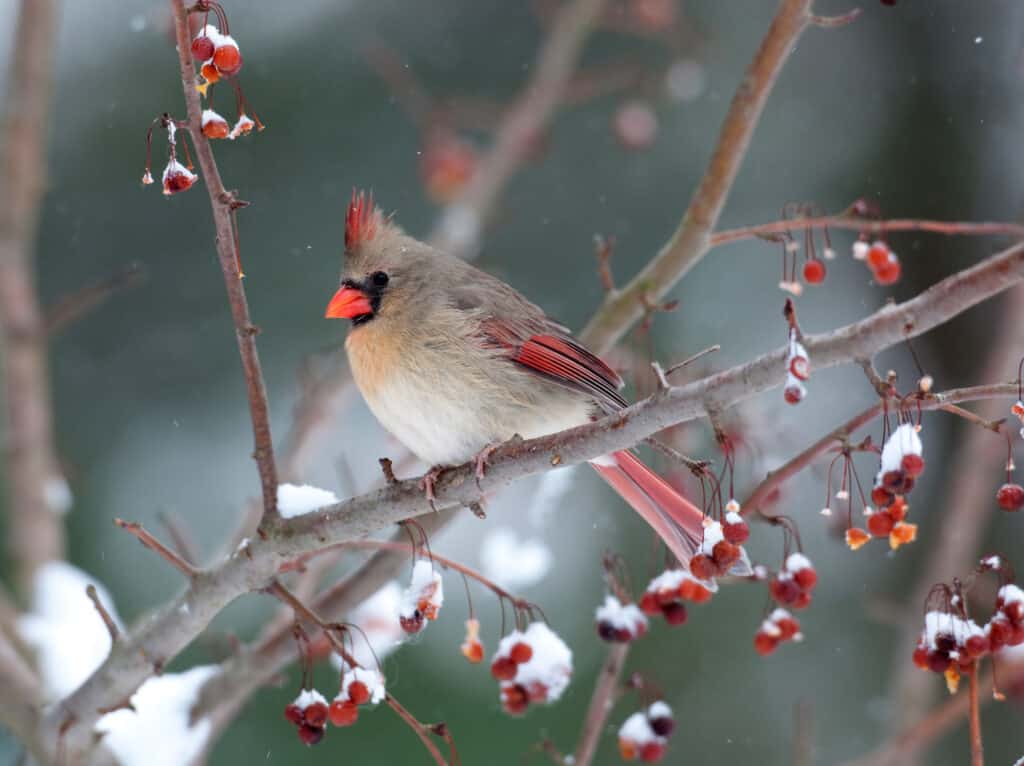
Cardinals are a popular bird during Maine’s winters, thanks to their year-round bright colors.
©iStock.com/EEI_Tony
The northern cardinal (Cardinalis cardinalis) is a staple species in much of the eastern United States. Maine is no exception. These little songbirds are year-round residents in the coastal regions of the state. They are known for their prominent display of sexual dimorphism. Males sport a bright red plumage with black masks, tall crowns, and bright orange bills. Females have similar body shapes, with smaller crowns, a more red-colored bill, and brown feathers instead. Some of their feathers, such as their crown, tail, and wings, are tipped with red.
This species prefers areas with moderately dense vegetation. They are common in suburban areas and are a popular backyard bird.
5. Great Blue Heron
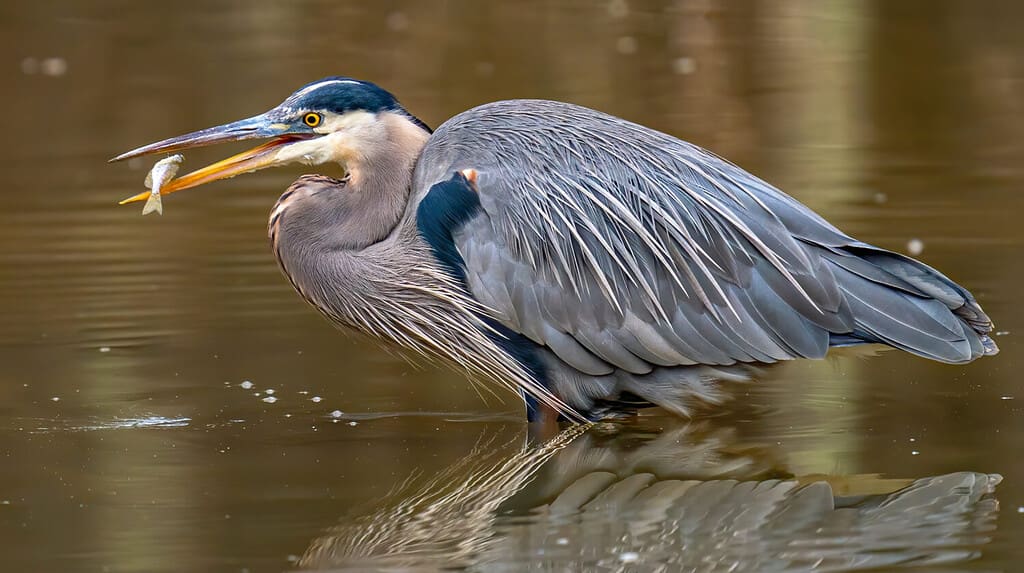
Colder weather won’t keep North America’s largest heron species away from the water, even in Maine!
©Krumpelman Photography/Shutterstock.com
Great blue herons (Ardea herodias) are the largest heron species in North America. They can be found in Maine throughout the entire year. These interesting birds sport impressive lengths, weights, and wingspans, with the latter reaching nearly 80 inches from wingtip to wingtip. However, while they are larger than many other species, they are often less bulky and have thinner appearances. Their plumage is blue-gray and white, with decorative black feathers beginning at the eye and slopping elegantly over the back of the head. Their bills are bright orange.
As with other heron species, the great blue heron is often spotted near water. They can be seen throughout all of Maine year-round.
6. House Finch
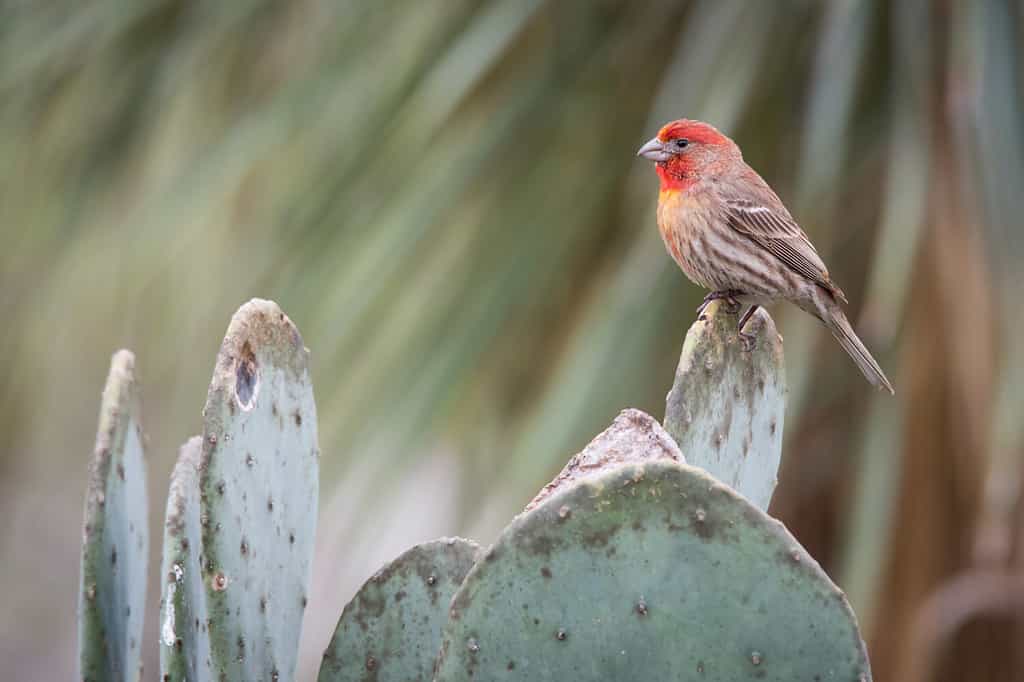
House finches aren’t originally native to Maine but are now common year-round residents.
©Puffin’s Pictures/Shutterstock.com
Originally, house finches (Haemorhous mexicanus) were found in the western United States. Today, however, they’ve been introduced to other regions, including Maine, where they are a year-round resident throughout the state. Although often overlooked in comparison to other, more recognizable species, the house finch’s rosy head and breast and cheerful song make it popular among birdwatchers.
House finches are most common in southeastern and eastern Maine along the coastal regions. They are familiar with humans, often building nests nearby and readily visiting bird feeders. This species prefers lower elevation areas in their natural habitat, below 6,000 feet, and is common in grasslands and streamsides. You may also find them in oak savannahs. Because they spend the entire year throughout their range in Maine, their bright appearance is one you can look forward to possibly seeing when attempting some winter bird watching.
The photo featured at the top of this post is © iStock.com/Lynnae_Lowe
Thank you for reading! Have some feedback for us? Contact the AZ Animals editorial team.







